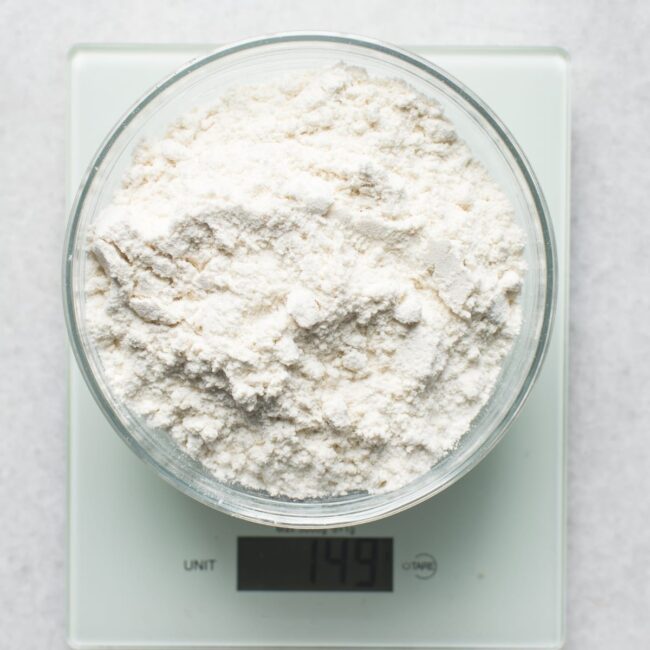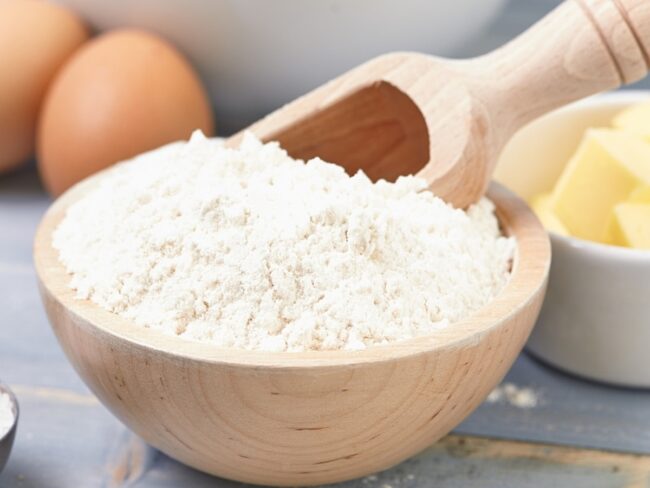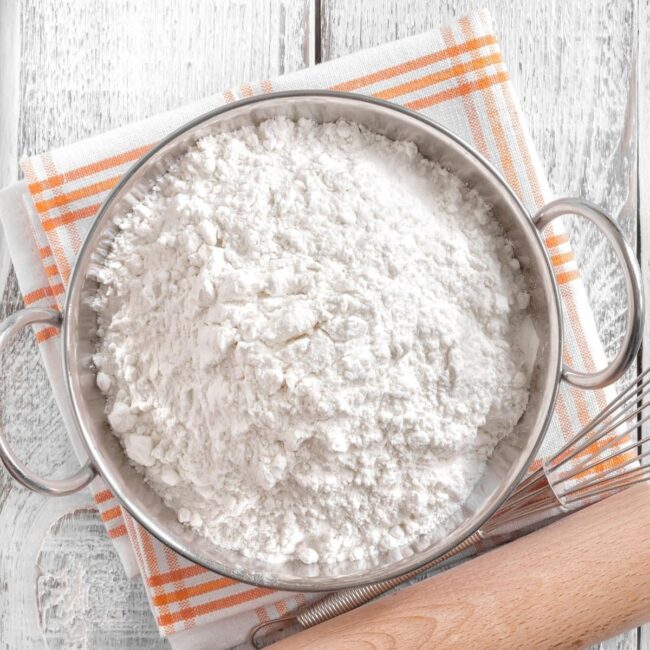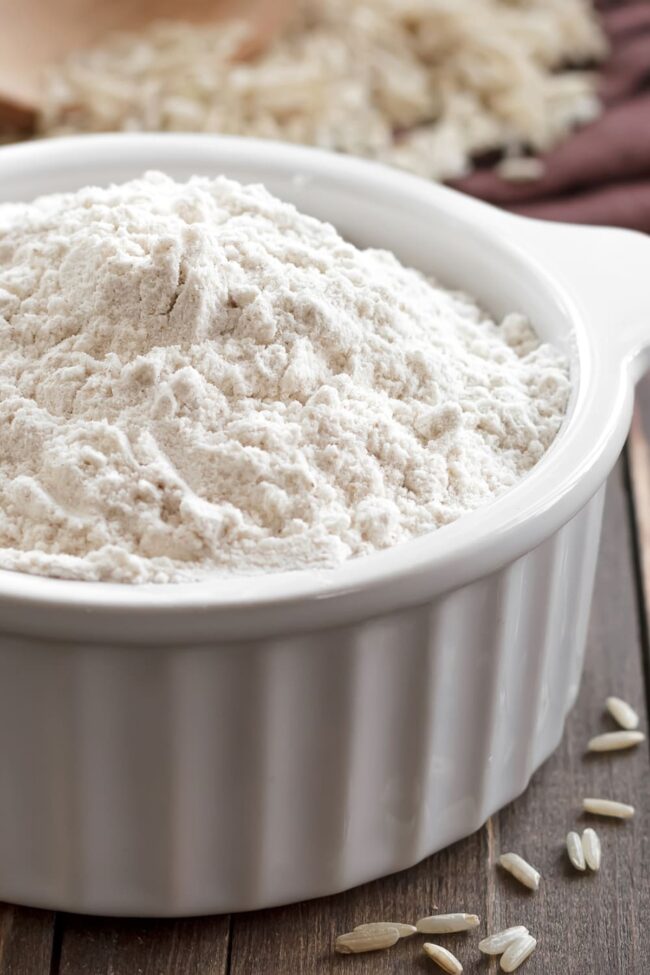5 Versatile Substitutes for Bread Flour in the Kitchen
When bread flour is unavailable or an alternative type of flour is desired, there are several options to consider.
These alternatives can offer similar structural properties, providing varying levels of protein and gluten content.
By choosing the appropriate substitute, you can achieve the desired texture and rise in your baked goods, ensuring a successful and delicious outcome.
5 Options to Replace Bread Flour
Bread flour alternatives offer comparable texture and structure for baked goods. Use these options to achieve similar results in breads, rolls, and pizza dough without compromising quality. Check out these 5 alternatives of bread flour in recipes as below.
All-Purpose Flour
All-purpose flour serves as a practical alternative to bread flour, offering flexibility in your baking endeavors.
With a protein content of 10% to 12%, it strikes a balance between the sturdiness of bread flour and the tenderness of cake flour.
When using it as a replacement, simply maintain the same quantity specified for bread flour in your recipe.
Expect some differences; breads made with all-purpose may yield a gentler texture and slightly less chewiness than their counterparts made with specialized flours.
Embracing this substitution opens up options for home bakers looking to simplify their pantry while still creating delicious loaves at home.
Cake Flour and Pastry Flour
Cake flour and pastry flour serve as excellent alternatives to bread flour when baking.
Their lower protein content results in a softer texture, making them suitable for lighter baked goods.
Blending these flours with all-purpose flour can enhance the protein level, achieving a balance that works well in bread recipes.
A mix of two parts cake flour and one part all-purpose can create an effective substitute for traditional bread-making needs.
While the final product may differ slightly in texture and flavor, it remains possible to achieve satisfying results without sacrificing quality or enjoyment during baking sessions.
Whole Wheat Flour
Whole wheat flour serves as a nutritious alternative to traditional bread flour.
Rich in fiber and essential nutrients, it includes the bran and germ, which contribute to its health benefits.
Expect a denser loaf with a heartier taste when using this flour in your baking projects.
Adjusting liquid levels is often necessary since whole wheat absorbs more moisture than regular bread flour does.
This switch not only enhances nutritional value but also adds depth to your homemade breads, making each bite more satisfying.
Self-Rising Flour
Self-rising flour combines all-purpose flour, baking powder, and salt into a handy mix for various recipes.
Choosing this option means skipping extra baking powder and salt in your dish.
Expect a softer texture when using it instead of bread flour due to its lower protein content.
This blend shines in quick breads and muffins that don’t need strong gluten development for structure.
Perfecting your baked goods becomes easier with self-rising flour at hand, simplifying the cooking process while still achieving delicious results.
Gluten-Free Flours
Gluten-free flours open up a world of options for those avoiding gluten.
Rice flour, sorghum flour, and almond flour each bring distinct flavors and textures to the table.
A premade gluten-free all-purpose blend simplifies the process, making it easier to experiment with various recipes.
Expect some changes in texture and flavor; without gluten's structure, your creations might turn out denser or crumblier than traditional bread.
Adjusting liquids or adding binders can help achieve a satisfying result that suits your taste buds perfectly.
Everything About Bread Flour
Bread flour plays a key role in baking, affecting texture and structure. Understanding its properties helps create perfect baked goods.
Protein & Gluten Levels
Bread flour stands apart with its robust protein content, ranging from 12 to 14%.
This higher protein level enhances gluten development, essential for achieving the right texture in bread.
A strong gluten network forms during kneading, allowing the dough to hold onto gases produced by yeast.
As a result, loaves rise beautifully and showcase a delightful airy quality.
Choosing this type of flour can elevate your baking game and lead to satisfying results every time you make bread.
Baking Uses for Flour
Bread flour shines when it comes to crafting a variety of delicious yeasted breads, such as baguettes and soft sandwich loaves.
This type of flour contains higher protein levels, promoting excellent gluten development that provides the perfect structure for pizza dough and pretzels.
The chewy texture created by bread flour is often sought after in bagels, delivering that satisfying bite you crave.
For lighter baked goods like cakes or cookies, other flours may yield better results since bread flour can lead to a denser outcome due to its strength.
Choosing the right type of flour can elevate your baking experience and ensure each creation turns out just as you envision it.
Creative Ingredient Swaps for Recipes
Swapping ingredients creatively allows for flexibility in recipes. Smart substitutions maintain flavor and texture while accommodating dietary needs.
Bread Recipes
Substituting bread flour can be a straightforward process with the right knowledge.
Whole wheat flour offers a healthy option, though it leads to denser bread when used in equal amounts.
All-purpose flour serves as another versatile choice; adding wheat gluten enhances its structure significantly, ensuring your loaf doesn’t compromise on quality.
For those seeking softer textures, cake flour works well by using 1.5 cups for every cup of bread flour needed.
Experimenting with these alternatives can lead to exciting new flavors and textures in your baking adventures!
Pizza Dough and Crusts
Achieving the right pizza dough is all about that ideal stretch and texture.
Using bread flour delivers a chewy crust, but alternatives exist for excellent results.
All-purpose flour works well in equal measure, ensuring a satisfying base.
Blending all-purpose with whole wheat introduces depth while maintaining structure.
Vital wheat gluten can enhance elasticity when added to your mix, creating a more resilient dough that holds toppings beautifully.
Cookies
Flour choice plays a significant role in cookie texture.
A chewier cookie benefits from blending all-purpose and cake flour, creating a delightful softness.
Crispier cookies shine with just all-purpose flour, offering that satisfying crunch.
Experimenting with these ratios opens up exciting baking adventures for you.
Understanding how each type affects your treats can lead to delicious discoveries in the kitchen.
Cakes
Cakes showcase a tender crumb that sets them apart from bread.
Choosing the right flour is crucial for achieving that perfect texture.
Cake flour offers a lighter consistency, needing 1.5 cups to replace every cup of bread flour.
For those without cake flour on hand, all-purpose works just as well in equal measure.
Adjusting liquid ingredients might be necessary when using these flours to ensure your cakes remain moist and delicious throughout baking.
Biscuits
Tender biscuits can easily become a staple in your kitchen with a few simple adjustments.
Mixing all-purpose flour and cake flour in equal parts creates a delicate texture that melts in your mouth.
Using solely all-purpose flour is another option, though it might yield a different feel.
Rest assured, the taste remains delightful regardless of the choice you make.
Experimenting with these combinations offers an exciting way to elevate your biscuit game while keeping things straightforward.






